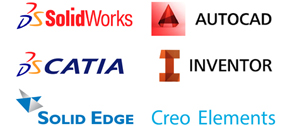Every owner of an iPhone, iPad and iPod Touch has an Apple ID, and the majority of those IDs are directly linked to a credit or debit card. If Apple were to use that Apple ID as a baseline credential for a mobile payments service, it would have a tremendous advantage in the world of financial services.
That’s exactly what Apple plans to do, according to a Wall Street Journal report, and the company reportedly assigned two of its prominent executives, iTunes and App Store chief Eddy Cue and online retail head Jennifer Bailey, to get that payments business off the ground.
The Journal didn’t get the details on what a payments service might look like, but I think Apple could head in one of three directions. It could follow in the footsteps of PayPal and become a payments processor on both the web and in the mobile apps world. Another option is Apple could turn Passbook into a true mobile wallet allowing people to pay for their goods at the cash register with a wave of an iPhone or the punch of a button. Or it could do both.
While Apple already has a lot of the pieces in place to become a payments powerhouse, it could boost its chances with some well-placed acquisitions. And in my view Square and Stripe could be at the top of the list. I’ll get into why those acquisitions make sense below, but first lets examine what an Apple payments service might look like.
Checking out online with iTunes
You could make the argument that Apple is already an online and mobile payments processor given the enormous volume of digital content sales it does through iTunes and the sales its processes on Apple.com. But in both cases it’s acting as a retailer, relying on companies behind the scenes to handle its enormous volume of credit and debit transactions.
But if Apple went beyond its own storefronts and used Apple IDs to verify other companies transactions, it would become a third-party payments processor, going head-to-head with PayPal, Visa and other financial titans. Instead of entering your credit card info when purchasing goods on say Fab.com or Uber you could check out with your Apple ID password just like you would when buying an app or a song from iTunes.
The big opportunity for Apple here is in mobile where thousands of startups are looking for simple and seamless ways to add payments options to their apps. New payments startups like Braintree and Stripe have been very successful by providing small companies with tools normally available to big retail giants, by quickly adapting to new collaborative consumption payment models and by making it easy for developers to add payments to their apps with a few lines of code.
Apple could try to recreate those efforts, or it could even accelerate the process by buying a company like Stripe (Braintree is off the market as of December when eBay/PayPal bought it for $800 million). Either way, Apple already has laid a lot of the groundwork. It has hundreds of millions of Apple IDs on file with credit card info already attached. Those Apple IDs are already authenticated to specific iPhones and Macs, providing another layer of security. And those IDs are already attached to mobile phone numbers, email addresses and now even fingerprint biometrics for additional verification purposes.
Customers would still have to opt in and register for any kind of Apple payments service, but when it comes to making a payment on a specific app there’s a much lower barrier to entry. Instead of requiring customer to entering email addresses, phone numbers and credit card numbers or PayPal credentials whenever they register for a service like Uber, paying for a ride on your iPhone might be a simple as entering your Apple password.
Apple also would have a big advantage in recruiting developers to its payments platform. It could simply make payments part of its iOS software developer’s kit, letting programmers tap into the iPhone or iPad’s payment features as easy as connecting to the device’s address book or accessing its Bluetooth radio. The bottom line is if Apple wants to become a payments processor on the mobile internet it doesn’t face many obstacles.
Buying your mocha latte with an iPhone
In the world of physical in-store payments, Apple has a much a steeper hill to climb. The problem with point-of-sale is Apple can’t just move the market with better technology in the iPhone and relying on its developer base. It has to convince hundreds of thousands of individual retailers to accept Apple payments and buy the hardware necessary to do so.
That’s created a bit of a chicken-or-egg problem for other mobile wallet creators such as Google and Isis. And at the end of the day, point-of-sale payments aren’t really broken. Swiping a plastic card works just as well as it always has.
Apple has definitely shown interest in being a player at the point of sale. Passbook is already widely used for applications like boarding passes and loyalty cards. With iOS7 Apple launched its iBeacon technology, which uses Bluetooth Low Energy to create proximity based networks that can detect the physical presence of a phone in a store or at the register. It also included fingerprint ID in the iPhone 5s, which could be used to authenticate a customer – not just his or her device – is present to authorize a sale.
Apple might have the hardware pieces in place for in-store payments, but it still faces the very difficult task of convincing retailers to use them. Here’s where acquiring a company like Square might give Apple a big boost.
Most mobile wallet designers have approached the transaction problem from the point of view of the consumer, while Square took its cues from the opposite side of the counter. It created a payments platform designed to be easy to use by the merchants and consequently it’s built up a huge customer base of small businesses using its point-of-sale hardware and software.
Square and Apple already share a lot in common. Square’s in-store point-of-sale terminal Stand is built around the iPad, and it shares with Apple a strong focus on design and ease-of-use. Acquiring Square would let Apple attack the payments from two sides – building technology and services for both buyers and selling, while increasing the value of its hardware to both consumers and businesses.
Square is also entering a lot of other payments areas that Apple is likely interested in. It’s launched its own Wallet, an online marketplace and even its own peer-to-peer payments service called Square Cash. It would be interesting to think one day that one day you could transfer money between Apple IDs just as you would send an iMessage or make a Facetime video call.
Still buying Square wouldn’t be cheap. The Dow Jones pegs its total valuation at $3.3 billion today. Stripe, too, is valued well over $1 billion after its last funding round. There’s nothing preventing Apple from entering the payments market alone, but if it does, I think it stands a much better chance of making a name in the world of virtual commerce than it does in physical commerce.
Feature image courtesy of Shutterstock user Sinisa Botas
via apple - Google News http://ift.tt/LgZ6w6













0 comments:
Post a Comment